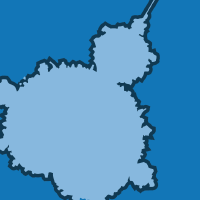Topic Editors




Fractional Calculus: Theory and Applications, 2nd Edition
Topic Information
Dear Colleagues,
The fractional calculus (FC) generalizes the operations of differentiation and integration to non-integer orders. FC emerged as an important tool for studying dynamical systems since fractional order operators are non-local and capture the history of dynamics. Moreover, FC and fractional processes have become one of the most useful approaches to deal with particular properties of (long) memory effects in various applied sciences. Linear, nonlinear, and complex dynamical systems have attracted researchers from many areas of science and technology involved in systems modeling and control, with applications to real-world problems. Despite the extraordinary advances in FC, addressing both systems’ modeling and control, new theoretical developments and applications are still needed in order to describe or control accurately many systems and signals characterized by chaos, bifurcations, criticality, symmetry, memory, scale invariance, fractality, fractionality, and other rich features.
This Topic focuses on original and new research results on fractional calculus in science and engineering. Manuscripts addressing novel theoretical issues, as well as those on more specific applications, are welcome. Topics of interest include (but are not limited to) fractional calculus theory, methods for fractional differential and integral equations, nonlinear dynamical systems, advanced control systems, fractals and chaos, complex dynamics, evolutionary computing, finance and economy dynamics, biological systems and bioinformatics, nonlinear waves and acoustics, image and signal processing, transportation systems, geosciences, astronomy and cosmology, nuclear physics, fractional modeling in econophysics, and fractional modeling for time series.
Dr. António Lopes
Prof. Dr. Liping Chen
Prof. Dr. Sergio Adriani David
Prof. Dr. Alireza Alfi
Topic Editors
Keywords
- fractional differential and integral equations
- fractional dynamics and control
- fractional calculus of variations
- symmetry
- applications of fractional calculus to real-world problems
Participating Journals
| Journal Name | Impact Factor | CiteScore | Launched Year | First Decision (median) | APC | |
|---|---|---|---|---|---|---|

Axioms
|
1.9 | - | 2012 | 21 Days | CHF 2400 | Submit |

Computation
|
1.9 | 3.5 | 2013 | 19.7 Days | CHF 1800 | Submit |

Fractal and Fractional
|
3.6 | 4.6 | 2017 | 20.9 Days | CHF 2700 | Submit |

Mathematics
|
2.3 | 4.0 | 2013 | 17.1 Days | CHF 2600 | Submit |

Symmetry
|
2.2 | 5.4 | 2009 | 16.8 Days | CHF 2400 | Submit |

MDPI Topics is cooperating with Preprints.org and has built a direct connection between MDPI journals and Preprints.org. Authors are encouraged to enjoy the benefits by posting a preprint at Preprints.org prior to publication:
- Immediately share your ideas ahead of publication and establish your research priority;
- Protect your idea from being stolen with this time-stamped preprint article;
- Enhance the exposure and impact of your research;
- Receive feedback from your peers in advance;
- Have it indexed in Web of Science (Preprint Citation Index), Google Scholar, Crossref, SHARE, PrePubMed, Scilit and Europe PMC.
Related Topic
- Fractional Calculus: Theory and Applications (40 articles)

